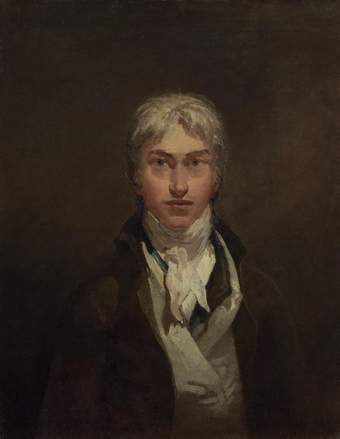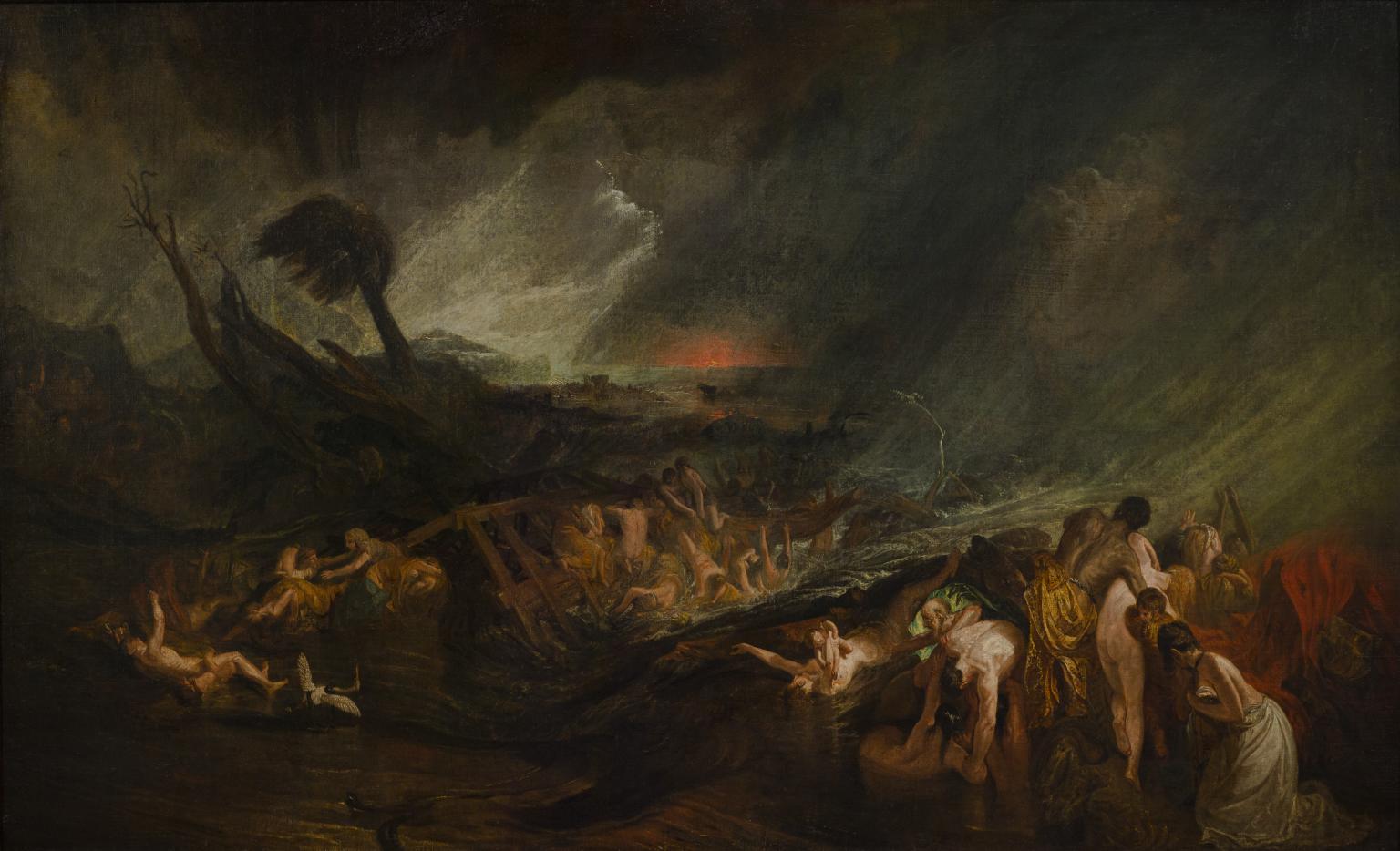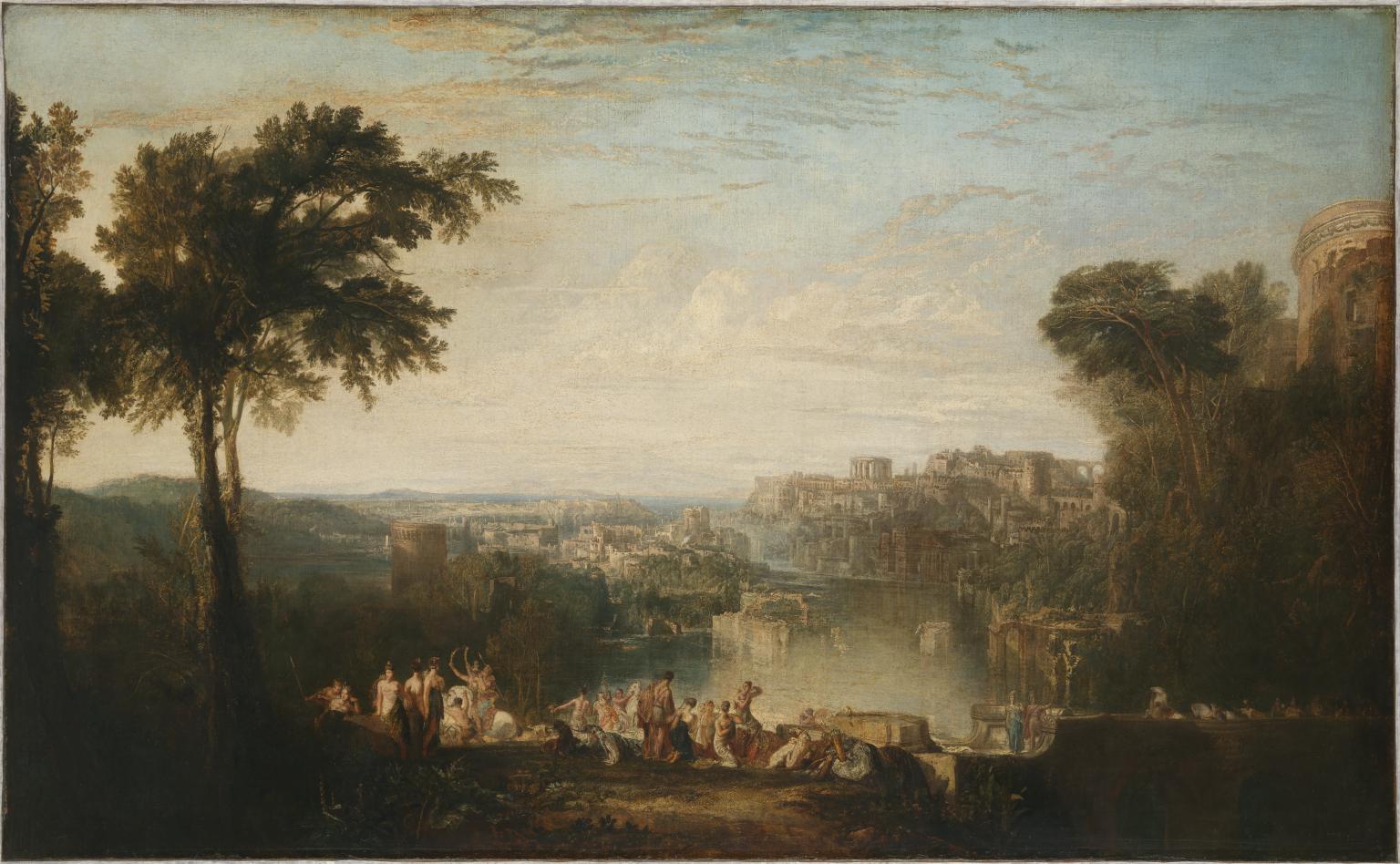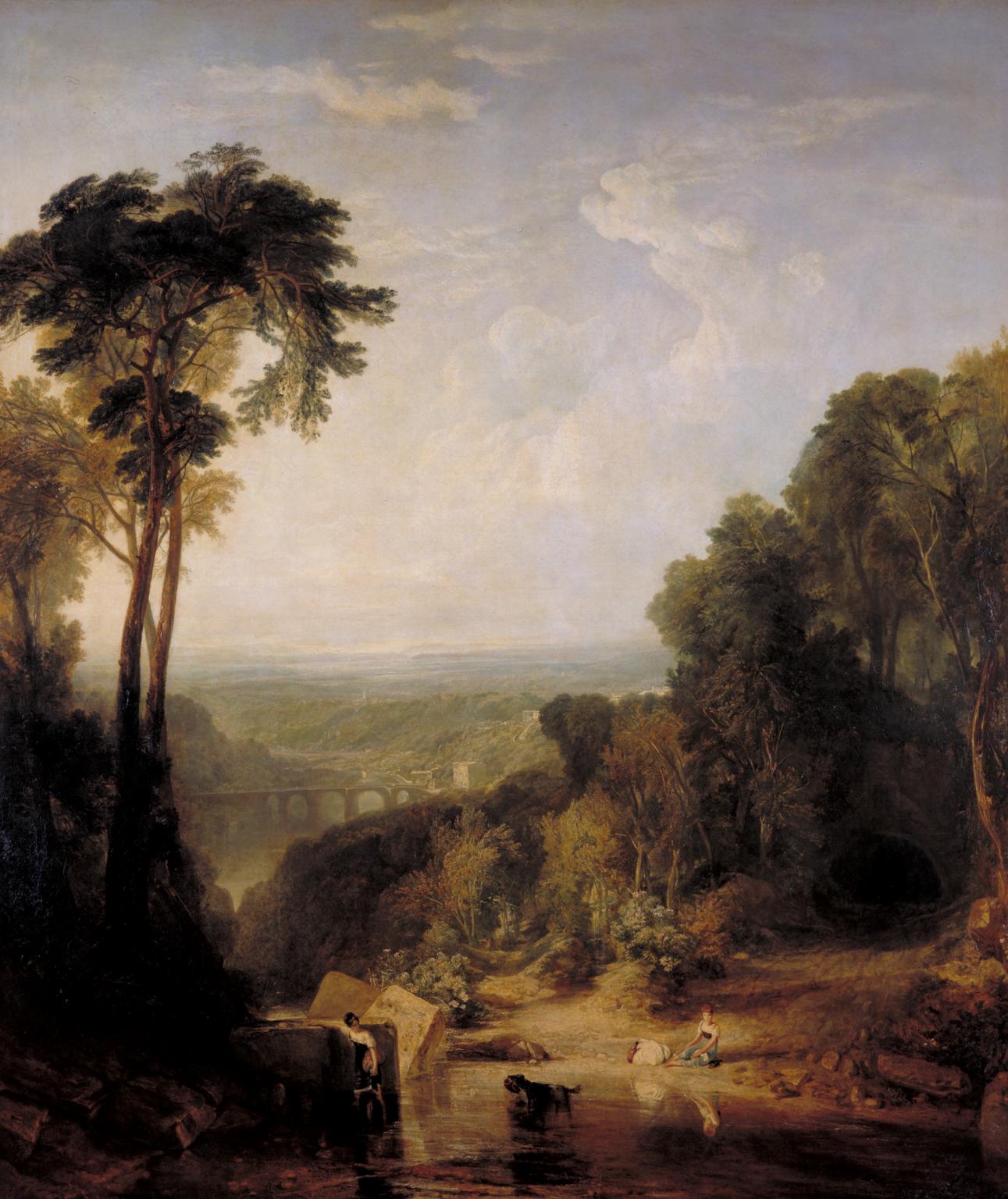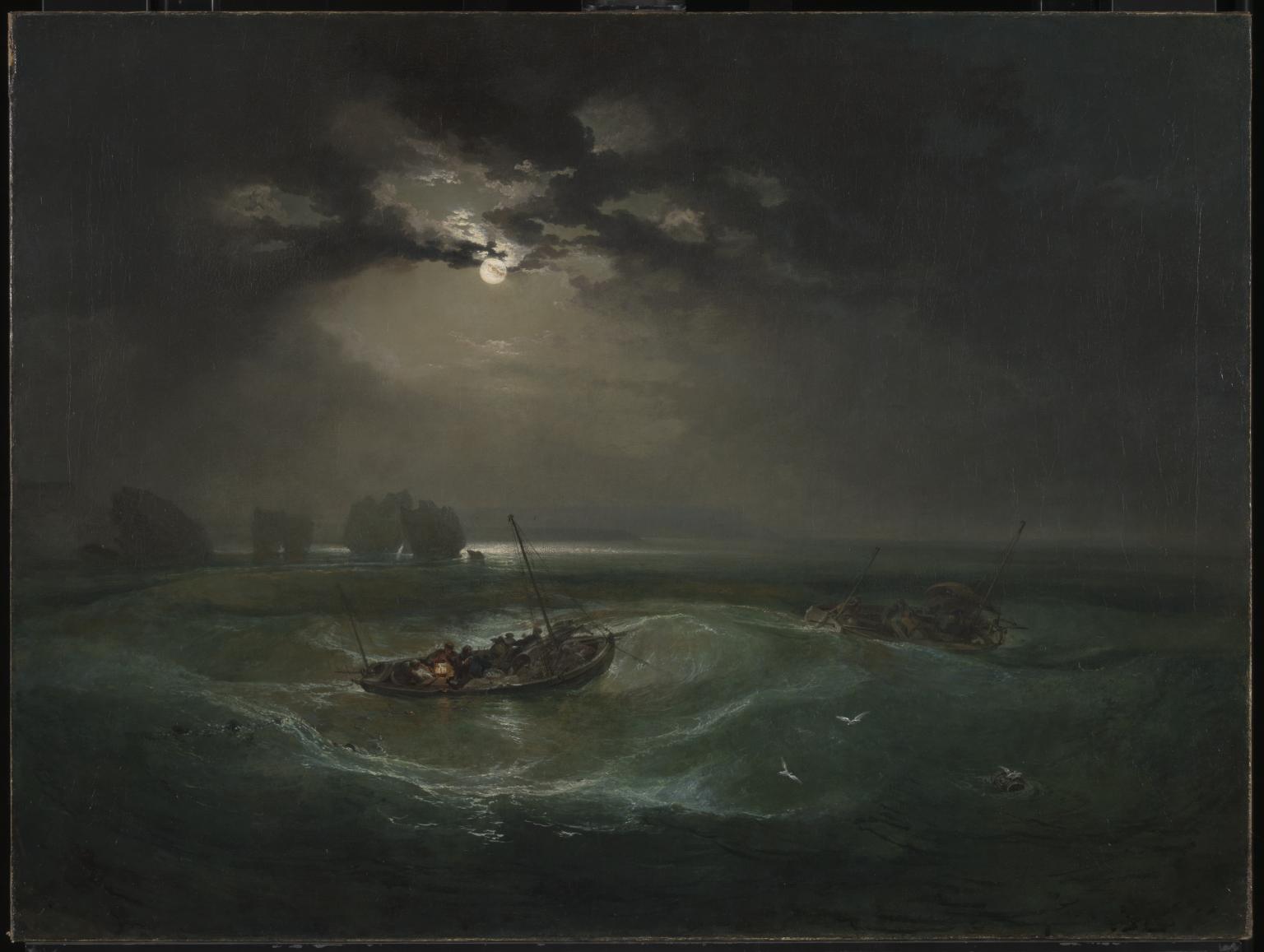9 rooms in JMW Turner
Joseph Mallord William Turner (1775–1851) was the star of his generation of artists. His bold paintings challenged convention and still inspire artists today
Famous for golden landscapes and stormy seas, Turner also painted the effects of war, empire and industrialisation. His work often asks us to think about the risks of human ambition.
Turner was born in Covent Garden, in the heart of London. His father, a barber, paid for art lessons and displayed his son’s drawings in his shop window. Turner became a student at the Royal Academy at 14 years old. By the age of 19, he was known as a brilliant young talent. Art critics praised his watercolours for their innovative compositions and dramatic atmospheric effects.
His early oil paintings played to popular taste, painting nature at its most spectacular. He used storytelling to breathe new life into the genre of landscape art.
Turner was ambitious, competitive, and entrepreneurial. He collaborated with publishers on prints after his work, securing his status as a household name. He also cared deeply about his legacy. When he died, he bequeathed a large number of his paintings to the nation, and after his death in 1851 the contents of his studio and gallery – over 30,000 items, known as the Turner Bequest – were acquired for the national collection. These galleries stem from the artist’s wish that his works be displayed together.
From Claude Monet to Mark Rothko and David Hockney to Tracey Emin many artists have been inspired by Turner, each generation finding something new in his work.
Art in this room

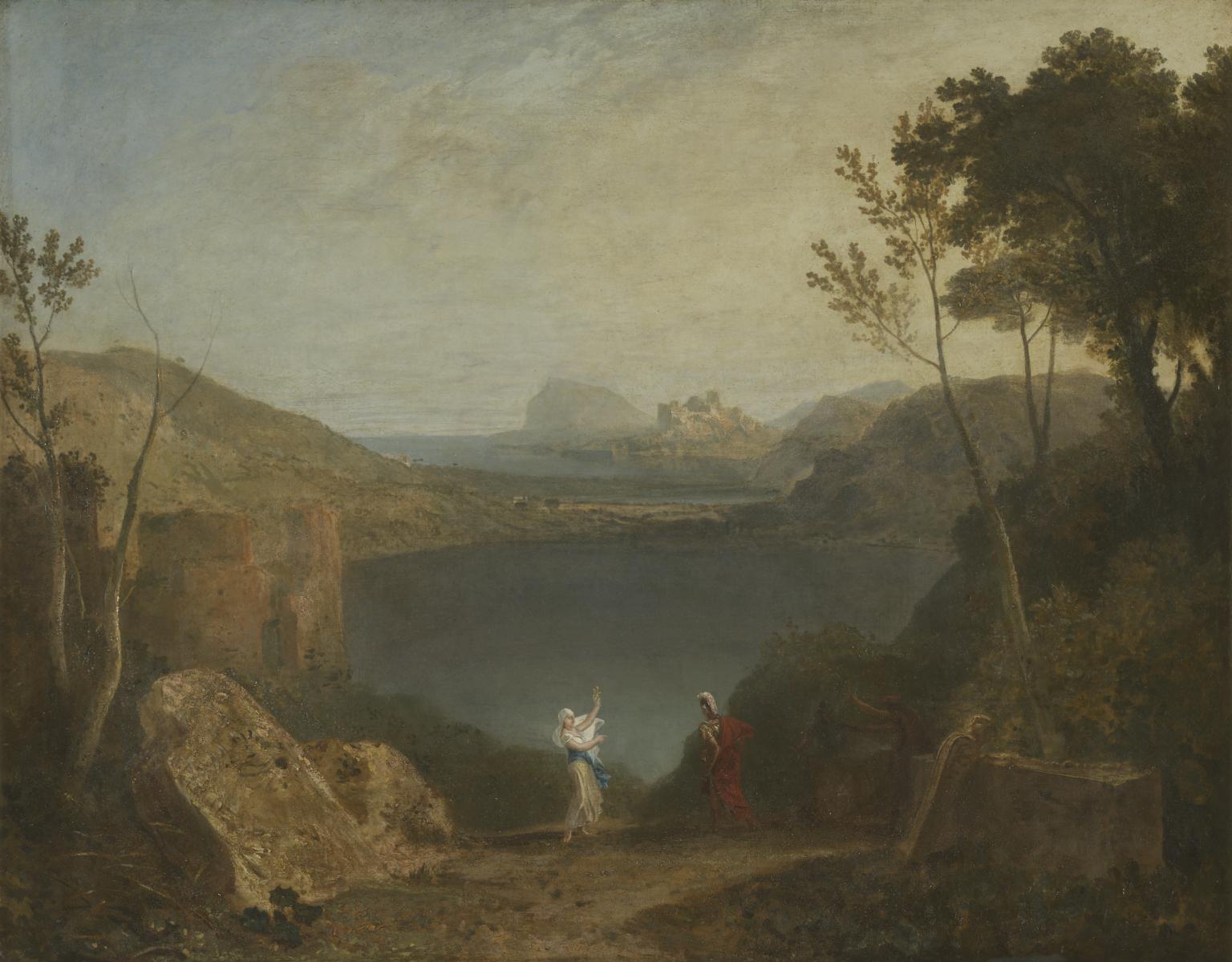
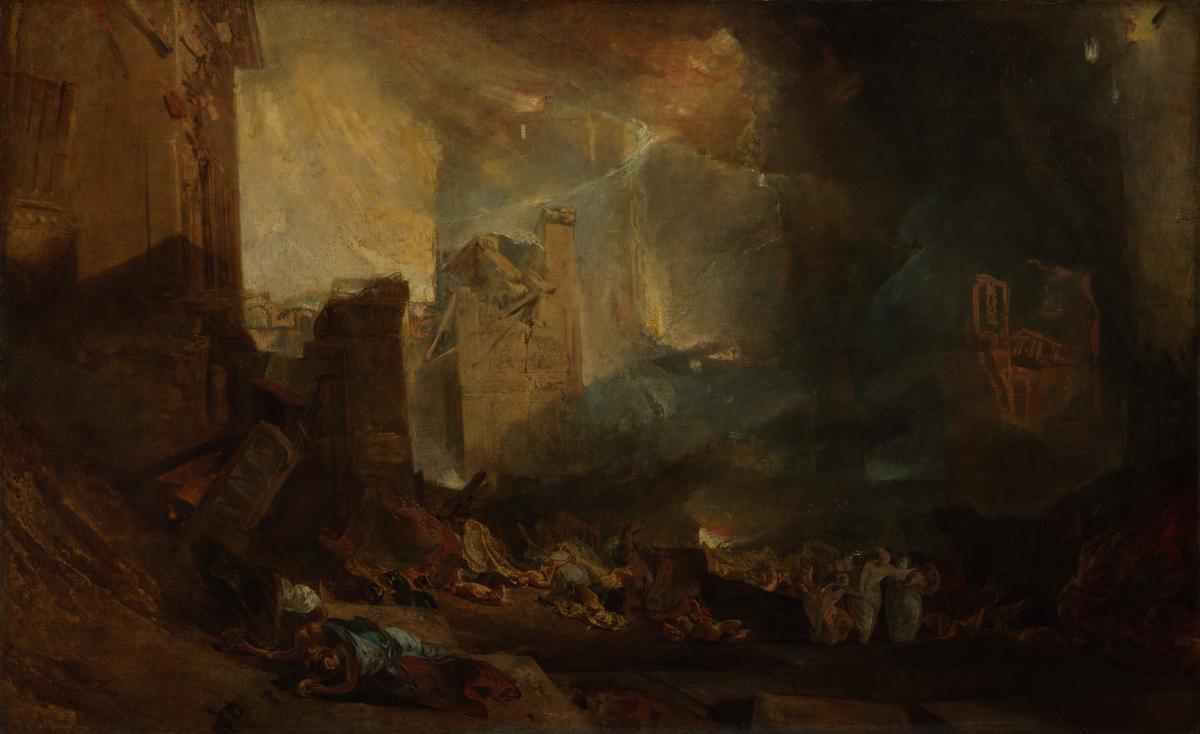
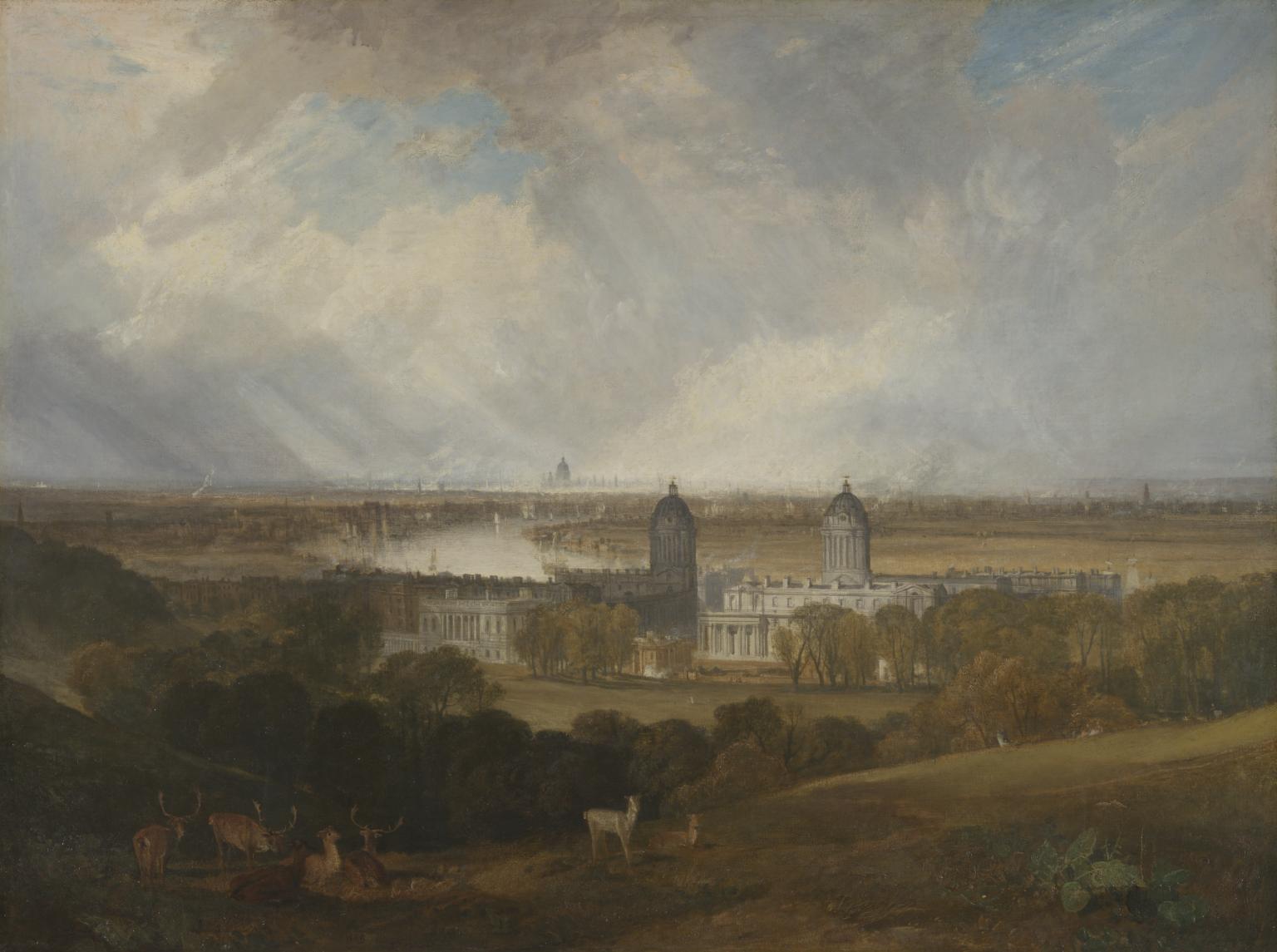
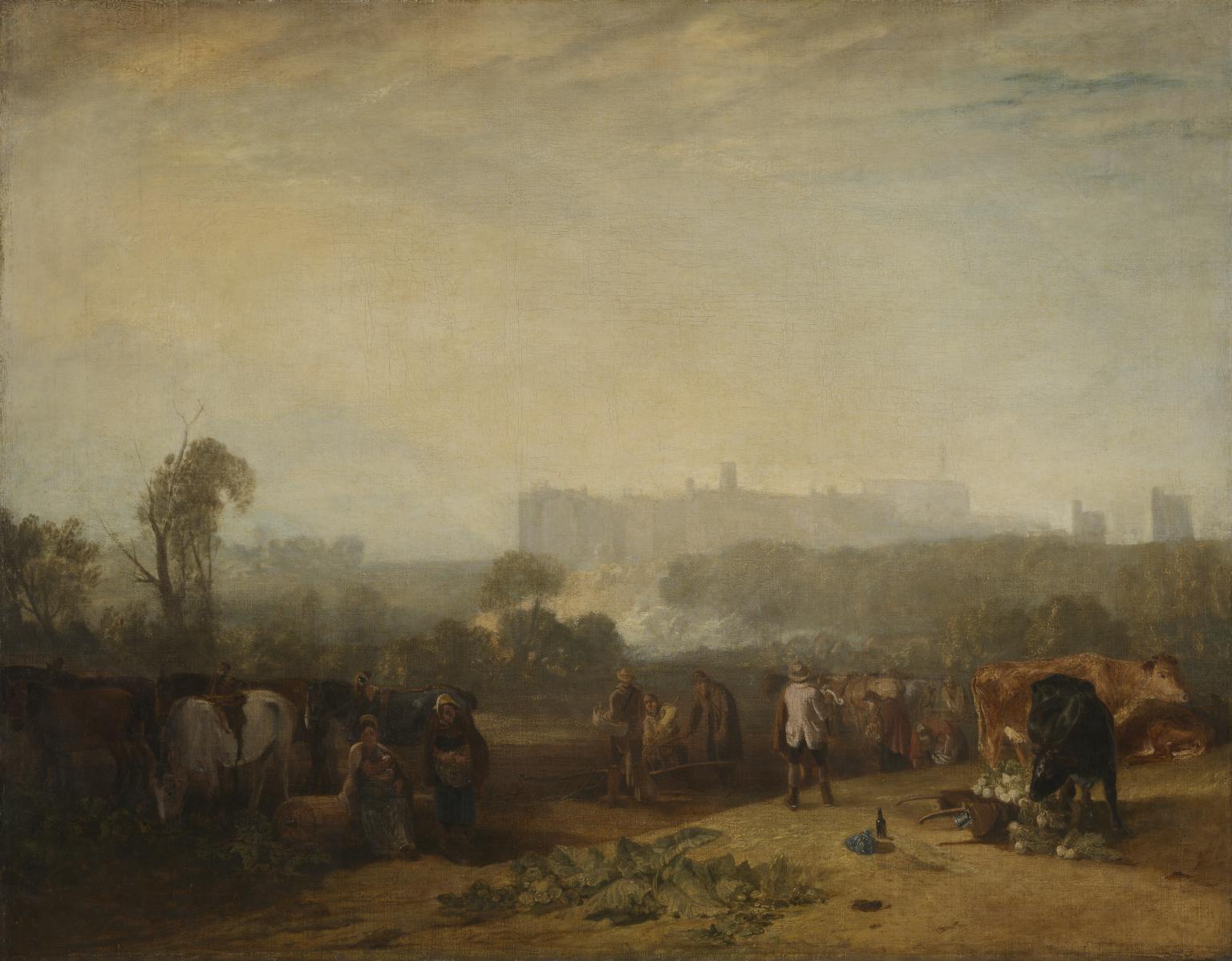

You've viewed 6/10 artworks
You've viewed 10/10 artworks

